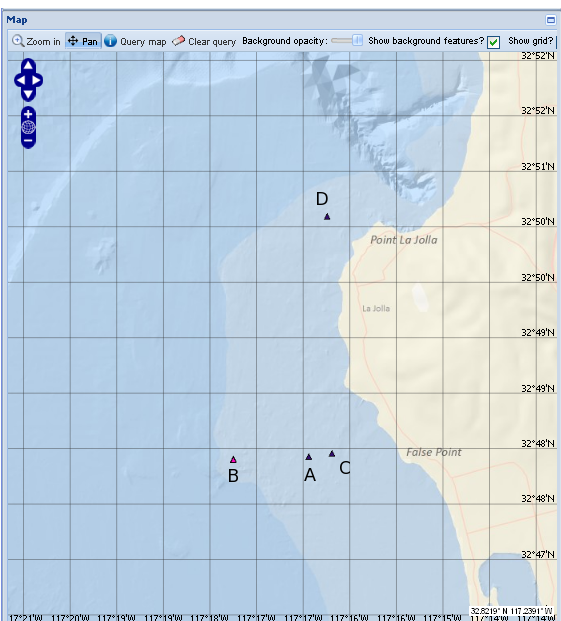 ©2020 Biological and Chemical Oceanography Data Management Office.
©2020 Biological and Chemical Oceanography Data Management Office.Funded by the U.S. National Science Foundation
Increased concentrations of atmospheric carbon dioxide are acidifying the marine environment at unprecedented rates. However, relative to the open ocean, predictions of ocean acidification for the coastal ocean are confounded by the greater inherent variability of carbonate chemistry which includes macrophyte photosynthesis and respiration. This proposal addresses the interplay between anthropogenically driven pH changes and the inherently variable coastal ocean carbonate chemistry, and will directly test the implications for a potentially sensitive life form, invertebrate larvae.
The objectives of this study are to measure the impact of key coastal habitats on natural pH variance, and to evaluate the implications these pH regimes have for developing invertebrate larvae. To achieve these objectives the investigators will characterize temporal and spatial carbonate chemistry variability inside and outside kelp forests in San Diego, California. With discrete water samples for the determination of total alkalinity and dissolved inorganic carbon, and continuous autonomous instruments which measure pH, dissolved oxygen, salinity, and temperature, a statistical characterization of carbonate chemistry variability will identify diurnal, seasonal and spatial trends as well as frequencies of maximum variation, rates of change, lowest potential pH (extreme statistics), and biologically-significant thresholds. Subsequently, prominent macrophyte-induced pH regimes will be mimicked in laboratory experiments and incorporated with ocean acidification predictions to test effects of (a) decreased pH, (b) varying pH about the mean, (c) changing variance about mean pH, and (c) pulsed exposure to extreme low pH, on larval survivorship, growth, and calcification responses of multiple species. Together, these laboratory and field studies will offer a mechanistic understanding of the effects of natural variance of carbonate chemistry in the context of ocean acidification for marine invertebrate larvae.
Four moorings identified as SeapHOx Moorings have been deployed in the San Diego La Jolla Kelp Forest in the vicinity of 32.8 N 117.3 W.

Lead Principal Investigator: Lisa A. Levin
University of California-San Diego Scripps (UCSD-SIO)
Co-Principal Investigator: Todd R. Martz
University of California-San Diego Scripps (UCSD-SIO)
Contact: Christina Frieder
University of California-San Diego Scripps (UCSD-SIO)
Ocean Carbon and Biogeochemistry [OCB]